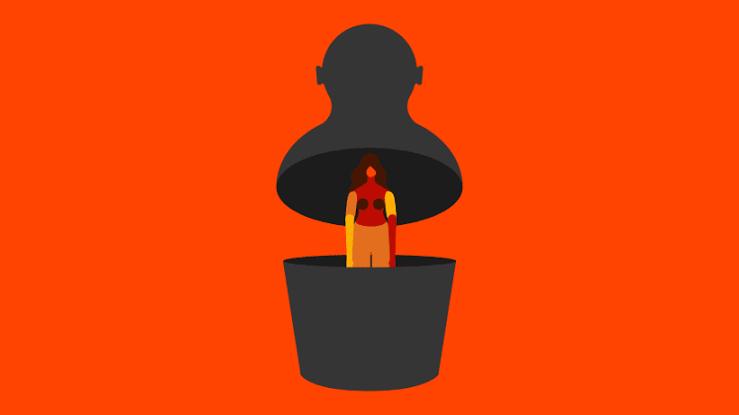Violence Against Women and Girls In the Household During the Covid-19 Pandemic
Source : UN Women
Gender-based violence, as it is called, is all forms of violence aimed against a victim depending on the gender of the person where this action causes harm such as physical, psychological, sexual, intimidation, bullying, lack of freedom, and others. Under the United Nations General Assembly Declaration on the Elimination of Violence Against Women of 1993, it was stated that gender-based violence covers several forms but is not limited to it. First, it is including violence like sexual abuse and exploitation Second, physical abuse involves physical attacks and such things as prostitution. Third, emotional and psychological abuse such as intimidation and embarrassment. Fourthly, negative cultural traditions such as female genital mutilation (FGM / C), and sexual abuse that do not provide women and girls with educational and economic opportunities. Fifth, socio-economic abuse such as resources or facilities inequality related to the person’s gender, sex, or sexual orientation.
Home is not a home anymore for some women and children around the world. Home is not a safe place anymore, but where the most psychological, physical, and sexual violence is committed. The UN Women estimate that 35% of women have experienced physical or sexual violence by non-partners and 70% of women have experienced physical and sexual violence by their partners or families. It indicates the most common causes of violence committed by the nearest people. As the “Stay at Home” policy has been reinforced all over the world to deter the transmission of coronavirus. According to UN Women (2020), reports on violence against women around the world have increased by 25% in-country with the current reporting system. To imagine the increment, consider sexual violence that occurred in 2017, there were 87,000 women killed by families or spouses, less than 40% of women seeking help against violence and these violations continue to increase until today (UN Women, 2017).
As we know, that number had continuously increased during the COVID-19 pandemic, and the main issue was the mobility limitation and helplessness of the victims that could not seek help. It is proved by the data from UN women (2020), stating that some countries report an increment in domestic violence such as; Singapore and Cyprus the number of helpline calls increased by 33% and by 30; In Indonesia, the director of Lembaga Bantuan Hukum Asosiasi Perempuan Indonesia untuk Keadilan Jakarta, Siti Mazumah through the press (CNN, 2020) stated that reports of violence in one month have risen significantly after 97 cases of violence occurred in March.
Some initiatives can be implemented by the government in this COVID-19 period to reduce gender-based violence. Since we all know today, the government is the most powerful player to reduce the abuse that exists during COVID-19 against women and children. First, the Government must consider vulnerable individuals when making decisions under COVID-19 conditions by providing services that pay attention to ‘physical distance’, which makes it easier to solve current problems, especially violence where the program offers a safe space, hotline and online counseling. Secondly, the government does need to take a role in delivering a message about human rights violations that are not tolerated and have no protection under the law. The message should also carry out promotions or campaigns on the consequences of ‘violence against women and children’ and thereby increase consciousness amongst people at home. Third, the government must make it clear to the public during COVID-19 that justice and law are not stopped. Last but not least, the government needs to adopt policies that recognize and incorporate violence prevention under COVID-19 conditions.
References
Fawole, Olufunmilayo. (2008). Economic Violence To Women and Girls. Trauma, violence & abuse. 9. 167-77. 10.1177/1524838008319255.
Krantz, Gunilla & Garcia-Moreno, Claudia. (2005). Violence against women. Journal of epidemiology and community health. 59. 818-21. 10.1136/jech.2004.022756.
LBH APIK Jakarta Catat KDRT Marak Terjadi saat Pandemi Corona (2020 April 21), CNN News. Retrieved from https://www.cnnindonesia.com/nasional/20200421114027-20-495587/lbh-apik-jakarta-catat-kdrt-marak-terjadi-saat-pandemi-corona
Simister, John. (2012). Gender based violence: Causes and remedies. Gender based Violence: Causes and Remedies. 1-228.
UNGA Declaration on the Elimination of Violence Against Women, Arts. 1&2,A/RES/48/104 of 20 Dec 1993.
UN (2006). Ending violence against women: from words to action. In-depth study on all forms of violence against women. Report of the Secretary-General. New York: United Nations General Assembly.
United Nations. (2020). The Impact of COVID-19 on Women (Policy brief). Retrieved From United Nations: https://www.unwomen.org/-/media/headquarters/attachments/sections/library/publications/2020/policy-brief-the-impact-of-covid-19-on-women-en.pdf?la=en&vs=1406
WHO (2013). Global and regional estimates of violence against women: prevalence and health effects of intimate partner violence and non-partner sexual violence. Geneva: World Health Organization (WHO), Department of Reproductive Health and Research, London School of Hygiene and Tropical Medicine, South African Medical Research Council.
Zakaliyat, Bonkoungou & Susuman, A Sathiya. (2016). Factors of Domestic Violence
Against Women: Correlation of Women’s Rights and Vulnerability. Journal of Asian and African Studies. 53. 10.1177/0021909616677373.
Author : Rupananda (IRB NEWS)
Editor : Andini Jasmin HG (IRB NEWS)



